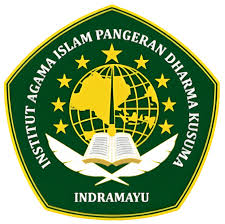PERATURAN DAN PERUNDANG-UNDANGAN PERIKANAN SERTA DAMPAK PENGGUNAAN PPC TRESS TERHADAP PENINGKATAN PENDAPATAN MASYARAKAT TAMBAK BUDIDAYA UDANG WINDU DI KABUPATEN INDRAMAYU
DOI:
https://doi.org/10.55656/tjmes.v7i2.419Keywords:
Legislation, Impact of PPC Use, on Shrimp FarmersAbstract
In Indonesia, fisheries regulations and shrimp farming expansion and trade policies are comprehensively regulated by the Ministry of Marine Affairs and Fisheries (KKP) and other related agencies. The main objective is to ensure the sustainability of cultivation, product quality, and competitiveness in the global market. Indonesia is the largest archipelagic country in the world, with an area of 13,6667 islands, with a coastline of more than 81,000 km, resulting in the potential of the sea and coast as very large resources. This very large potential resource opportunity is very suitable for the expansion and development of shrimp farming in the future. Shrimp farming has developed, starting from the people living on the coast of East Java, the western part of the Bengawan Solo delta in the Sedayu area to the south of the Brantas delta in the Pasuruan area, along the north coast of Java, from Juwana and Rembang, Jepara, Semarang, Pekalongan, Tegal, Brebes, Cirebon, Indramayu to the tip of Kerawang and ending in Banten. The average shrimp production in Indonesia is still very low, when compared to the shrimp production of Taiwan, which reaches 8 tons per hectare in one year, while Indonesia only reaches 1 ton per hectare per year.
Several factors that limit shrimp production in Indonesia include limited seeds, supporting facilities such as fertilizers, pesticides, operational equipment, techniques in cultivating ponds, as well as infrastructure related to irrigation, roads and electricity, and capital problems, skilled workers, or experts and management that regulates land use. Moreover, shrimp production is a non-oil and gas prima donna export that is being promoted, both by the government and the shrimp farming community. To increase shrimp production, shrimp cultivation techniques have recently been developed in the community, with a controlled system, namely with a controlled system planting pattern (Intam) pond intensification including the A1 pattern (simple), A2 (medium) or semi-intensive, and the A3 pattern (modern) intensification.
When associated with the use of liquid complementary fertilizer (PPC) TRESS as a supporting facility for the production achieved. Because it contains a composition of micro and macro biological in liquid form with nutrients, other nataara N (12.63%), S (0.62%), p (1.41%), B (0.75 PPM), Zn (22.15 ppm), Mn (56.06%), Mg (0.22%), Ca (0.85%), Fe (0.41%), Cu (5.60 ppm), K 91.97%), Co (6.08). Made from natural materials such as vegetable oil, and animals can be directly absorbed by the intestines in the shrimp body. The advantages of TRESS fertilizer, namely: Can increase shrimp production, can grow plankton, can reduce feed costs, improve water quality and be immune to disease. The hope is that both profits or income increase. There needs to be attention from shrimp farmers and local officials (fisheries services) especially in the Indramayu Regency area and generally in other areas regarding the success that has been achieved from the influence of TRESS fertilizer, especially for the company PT. Intrasa Raya Mulia in Jakarta to develop wider marketing so that it is accessible to the wider community.
References
-Bambang A.G. Tambak air payau, Penerbit Kanisius, Yogykrta, hlm. 60.
- Bambang A. M. ,Tambak air payau, Penerbit, Kanisius, Yogyakarta, 1989, hlm. 61.
-Ahmad Mujiman, Drs. S. Rachmatun Suyanto, 1990, BididayaUdang Windu, Jaskarta, Penebar Swadaya.
- Dedi Haryadi, Sutadi, 1993, Back Yard, Usha Pembenihan Udang Skla Rumah Tamngga, Jakarta, Penebar Swadaya.
-Sutarno, AK, 1992, Budidaya UADANG, Semarang: CV. Aneka Ilmu.
-Sutaman, 1993, petunjuk Praktis Pembenihan Udang Windu, Yogtyakarta: Kanisius.
- Mubyarto, 1991, Pengantyar Ekonomi Pertanian, Jakarta: LP & ES.
- Kismono Hasrti Murty B. 1991, Perdagangan Usdang Intyernasional, Jakarta, Penebar Swadfaya.
- Herman Arsyad, Ir. Rina E. Hadirini, 1989, Petunjuk Praktis Bididaya Perikanan, Jakarta”: PD. Mahkota.
-Dinas Perikanan, 1992, Laporan Tahunan 1992, Pemerintah DATI II Indramayu .
- Eddy Afrianto, Ir. Evi Liviawaty, 1991, Tehnik Pembuatan Tambak , Yogyakarta: Kanisius.
Pakan Chuen Shin, 1980, Brosur PAKAN Chuen Shin.
-Sri Umiyati Sumuru, Dra. Suzy Anna , 1992, Pakan Udang Windu, Yogyakarta: Kanisius.
- Bambang Agua Murtidjo, 1989, Tambak Air Payau, Yogyakarta: Kanisious.







